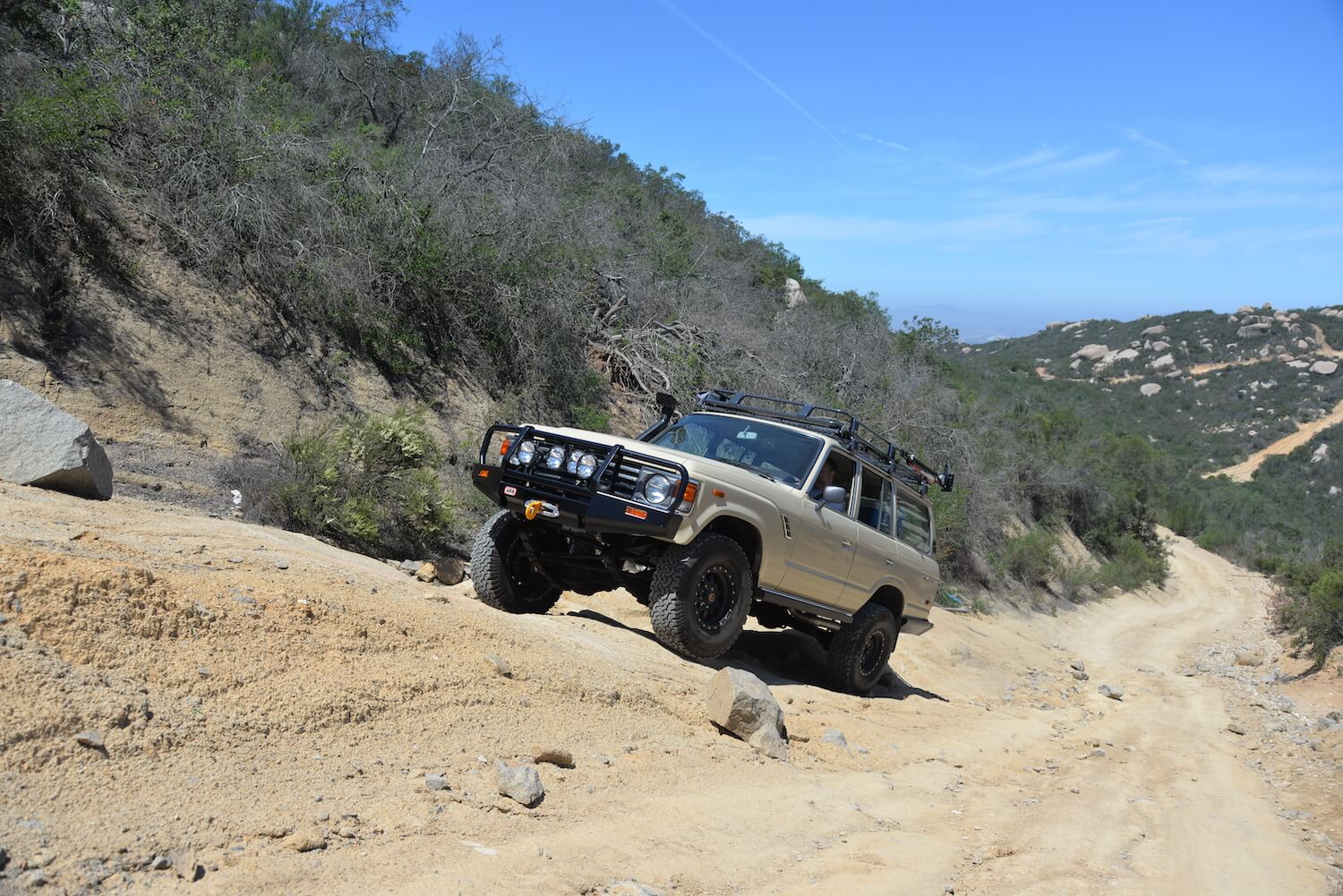
Photos: John Cappa and courtesy of the manufacturers
There are hundreds of people that misuse many different aftermarket 4×4 products, and we aren’t even talking about abusing them. We’re talking about simply using the products incorrectly, unsafely or in a way that doesn’t benefit the user at all. So in hopes of putting a stop to it and help you get the best performance from every aftermarket product you add to your 4×4, we’ve compiled a list of the most commonly misused 4×4 parts. Here’s how to get the best bang for your buck if you’ve already added these products to your vehicle.
Aftermarket Tires
The most popular aftermarket upgrade for any 4×4 is larger and more aggressive off-road worthy tires. There are several errors made besides the obvious mistake of buying tires that rub because they are too big. First and foremost, get the correct load range for your vehicle. For example, an E load range tire on a Wrangler usually only causes a rougher ride and reduced fuel economy, however putting a C or D load range tire on a heavyweight 3/4- or 1-ton truck can be a dangerous combination.
Tire pressure is also important. In the past, many people mistakenly filled the tires up to the maximum tire pressure listed on the sidewall. This enviably caused a rough ride and many expensive tires to be worn out prematurely in the middle of the tread. Figure out the proper street pressure for your larger tires and check them regularly. Many new trucks now have tire pressure monitor systems, which may or may not be accurate for larger tires. Aftermarket programmers are available to alter the tire pressure monitoring systems.
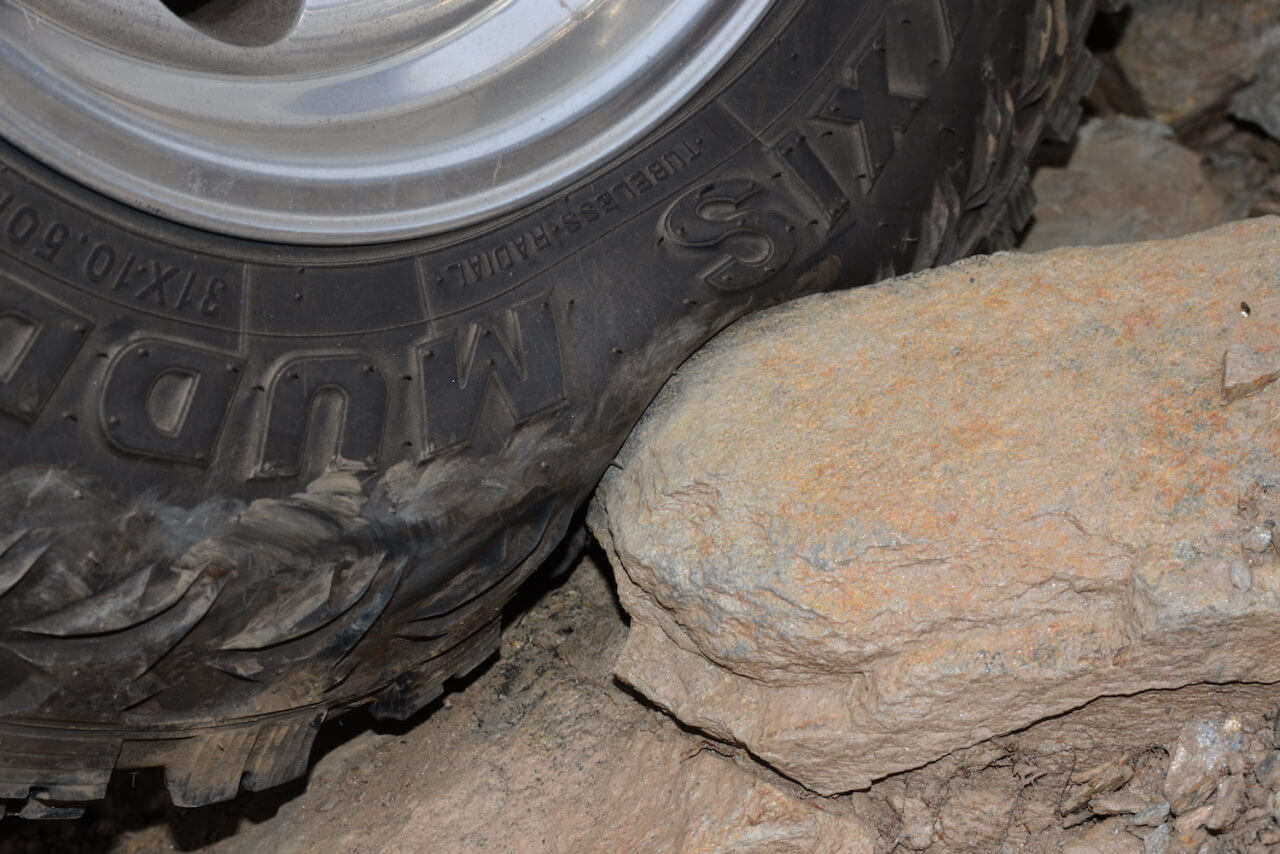
Too much tire pressure off-road is the number one mistake we see most 4×4 enthusiasts make. Lower tire pressures provide more traction, more flotation over loamy soil and a smoother ride over rough surfaces.
Airing down the tires off-road has many advantages. It offers more traction, more flotation over sand and a smoother ride over rough surfaces. All too often we see enthusiasts running full tire pressure in the dirt. This leads to more tire spin and abuse to both the 4×4 and the occupants. Most 4x4s can run on tires aired down to 15-25 psi in the dirt. What pressure you run will depend on the vehicle, tire, overall weight, trail conditions and driving style.
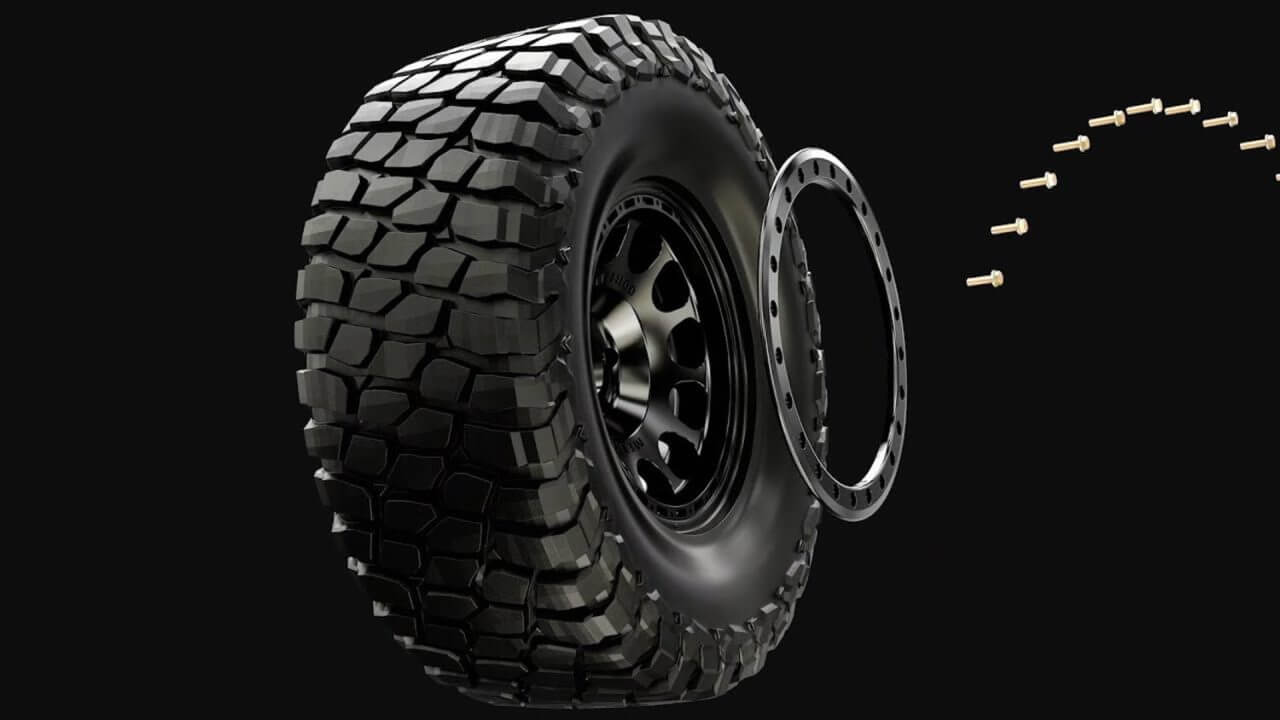
Beadlock wheels don’t just look cool. They allow for even lower tire pressures off-road, which is something many beadlock users fail to make use of. The hardware generally does not loosen on its own, but it can loosen when the bolt heads make contact with trail obstacles.
Beadlock Wheels
In most cases beadlock wheels are not recommended for street use. It’s not because they are unsafe, it’s because they simply don’t adhere to a DOT dimension required for them to be compliant. Some people mistakenly believe beadlock bolts will loosen on their own, which generally only happens on low quality or poorly assembled beadlock wheels. However, what can happen is that the beadlock bolt heads can make contact with off-road obstacles, sometimes causing them to loosen. Regardless of how you use beadlock wheels, it’s always a good idea to regularly check the beadlock bolts. Completely deflate the tires when checking the bolts to avoid injury in the event of a catastrophic beadlock failure.
A major advantage to beadlock wheels is the ability to run the tires at lower air pressure for better off-road performance. Many uneducated beadlock wheel owners completely miss out on the advantage of their wheels and don’t air their tires down enough. Large aftermarket tires can usually be aired down to the single digits when mounted on beadlock wheels.
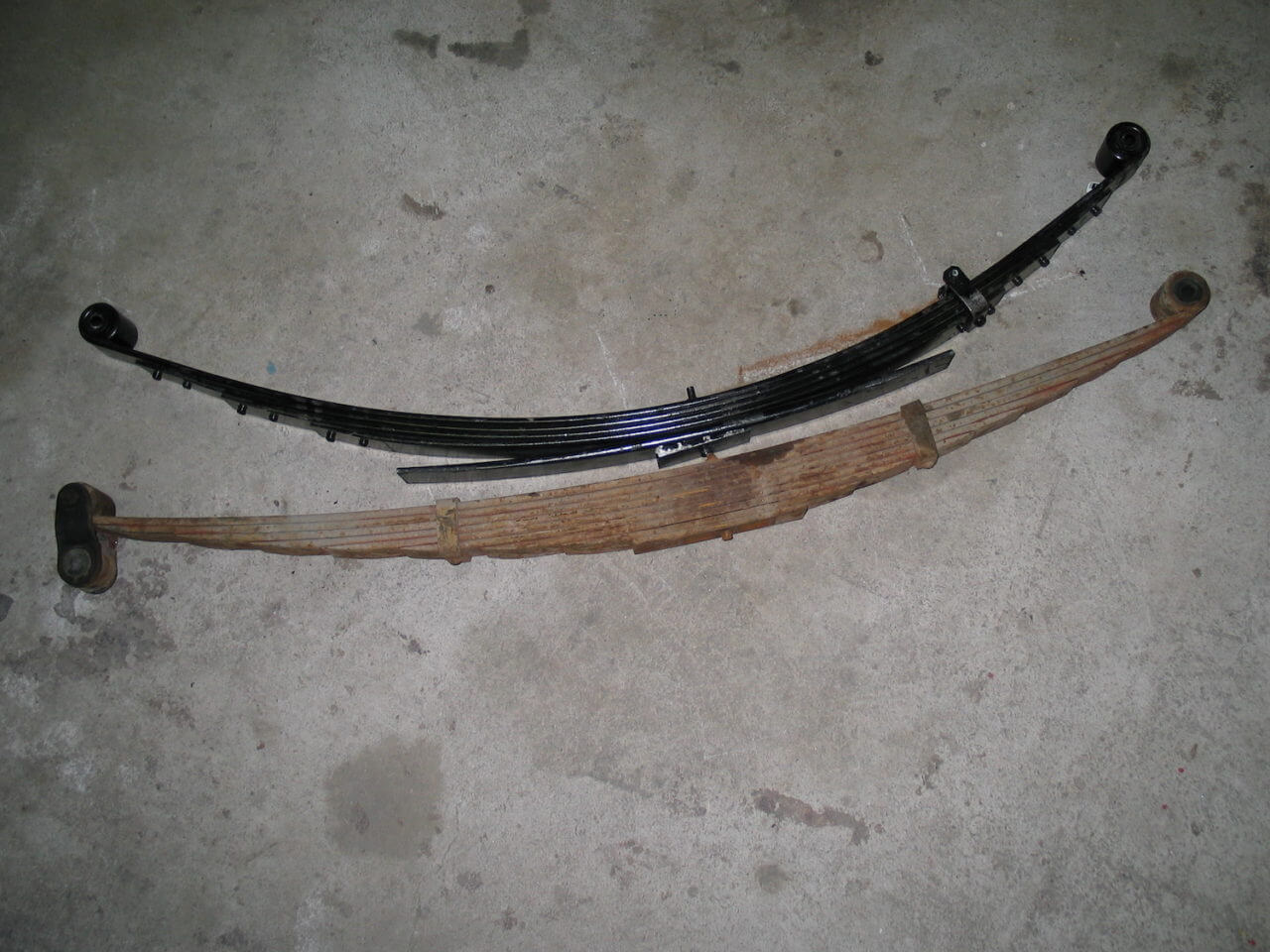
Never stack lift blocks when lifting a leaf sprung 4×4. Aftermarket lift springs are the best route to go when lifting a 4×4 that is used off-road regularly. Also, combining lift springs and short lift blocks is a better option than using large lift blocks with the stock leaf springs.
Leaf Spring Lift Blocks
It’s fairly well known that using lift blocks under front leaf springs is a completely unacceptable practice. They can spit out causing you to lose control of the vehicle. It’s been several years since any new 4x4s have come with front leaf springs, but many 4x4s still feature rear leaf springs. Single lift blocks are acceptable on rear suspensions, but stacking lift blocks in the rear should be avoided. The stacked blocks can shift or the centering pins can sheer causing the suspension to collapse. The problem stems from the fact that some trucks come with factory rear lift blocks. When these vehicles are lifted, a small lift block is often stacked on top of the factory block. For a street queen this is sometimes considered an acceptable practice, but if you plan to take the vehicle off-road, haul cargo or tow any significant loads it can be a risky modification. You’ll be far safer either upgrading to aftermarket rear lift leaf springs or switch to larger lift blocks in place of the stacked blocks.
Aftermarket CV-style driveshafts can smooth out annoying driveline vibrations. They are also generally more durable than their OE driveshaft counterparts. Make sure your new CV driveshaft isn’t binding when the suspension cycles.
CV Driveshafts
Lift kits, larger tires and off-road use can put the driveshafts of a 4×4 in jeopardy, especially on vehicles with short wheelbases. The issues include vibration, binding and poor overall durability. Fortunately, the aftermarket offers bolt-on heavy-duty CV style driveshafts for many popular applications. Switching to a properly set up aftermarket CV driveshaft will help eliminate driveline vibration at higher speeds. The aftermarket driveshafts are also typically much more durable than the factory parts, but what they can’t do is allow for significantly increased driveline angles. In extreme cases, the driveshaft angles can become too steep for any driveshaft. All too often we see vehicles with extra tall lift kits that exceed the mechanical limits of even a CV driveshaft. What most people don’t understand is that an aftermarket CV driveshaft doesn’t necessarily allow for an increase in maximum angularity over a stock driveshaft. Most traditional driveshafts are designed to operate with the U-joints at 5-9 degrees. CV-style driveshaft joints can usually operate at around 15 degrees. However, both driveshaft styles typically bind at around 25-30 degrees. Exceeding these angles will eventually cause driveshaft, yoke or transfer case failure. Of course a heavy-duty aftermarket driveshaft can usually handle some slight binding longer than a factory driveshaft, but a catastrophic end will still be the result.
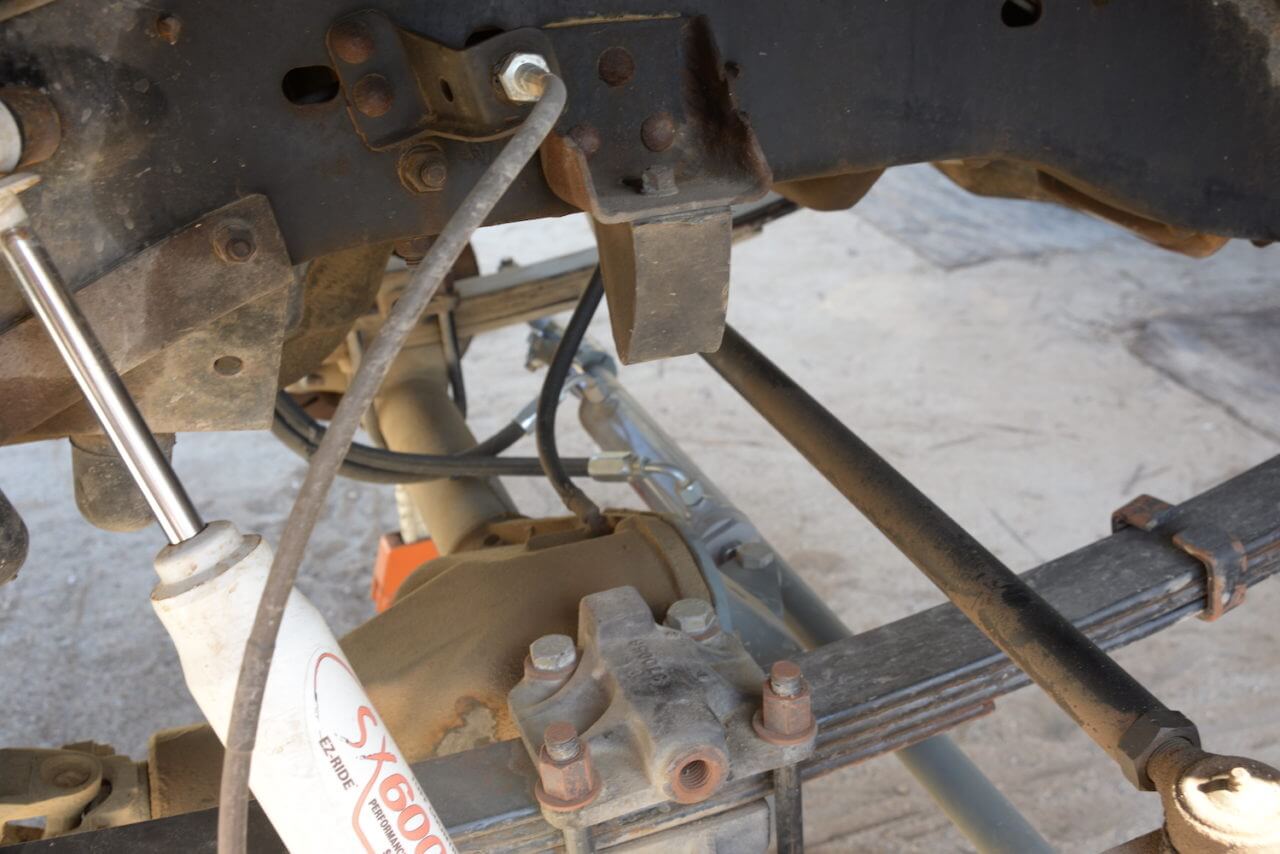
Nearly all lift and leveling kits include taller bumpstops or bumpstop extensions. They keep larger tires out of the fenders and prevent harsh suspension bottoming that can damage shocks, shock mounts and other chassis components.
Suspension Bumpstops
Most suspension lift kits and leveling kits include bumpstop extensions or larger bumpstops. All too often these bumpstop extensions and replacements are not installed on the vehicle in an attempt to increase wheel travel or to simply save time. Incorrectly located bumpstops can cause the shocks to bottom out or allow other suspension components to make contact with something they shouldn’t. On a street driven 4×4, you may never have a problem. Off-road is a different story. Over compressing the suspension can lead to broken shocks and shock mounts, sagged springs or even a bashed engine oil pan. If bumpstop extensions came in your lift kit or leveling kit, they should be installed on your 4×4.
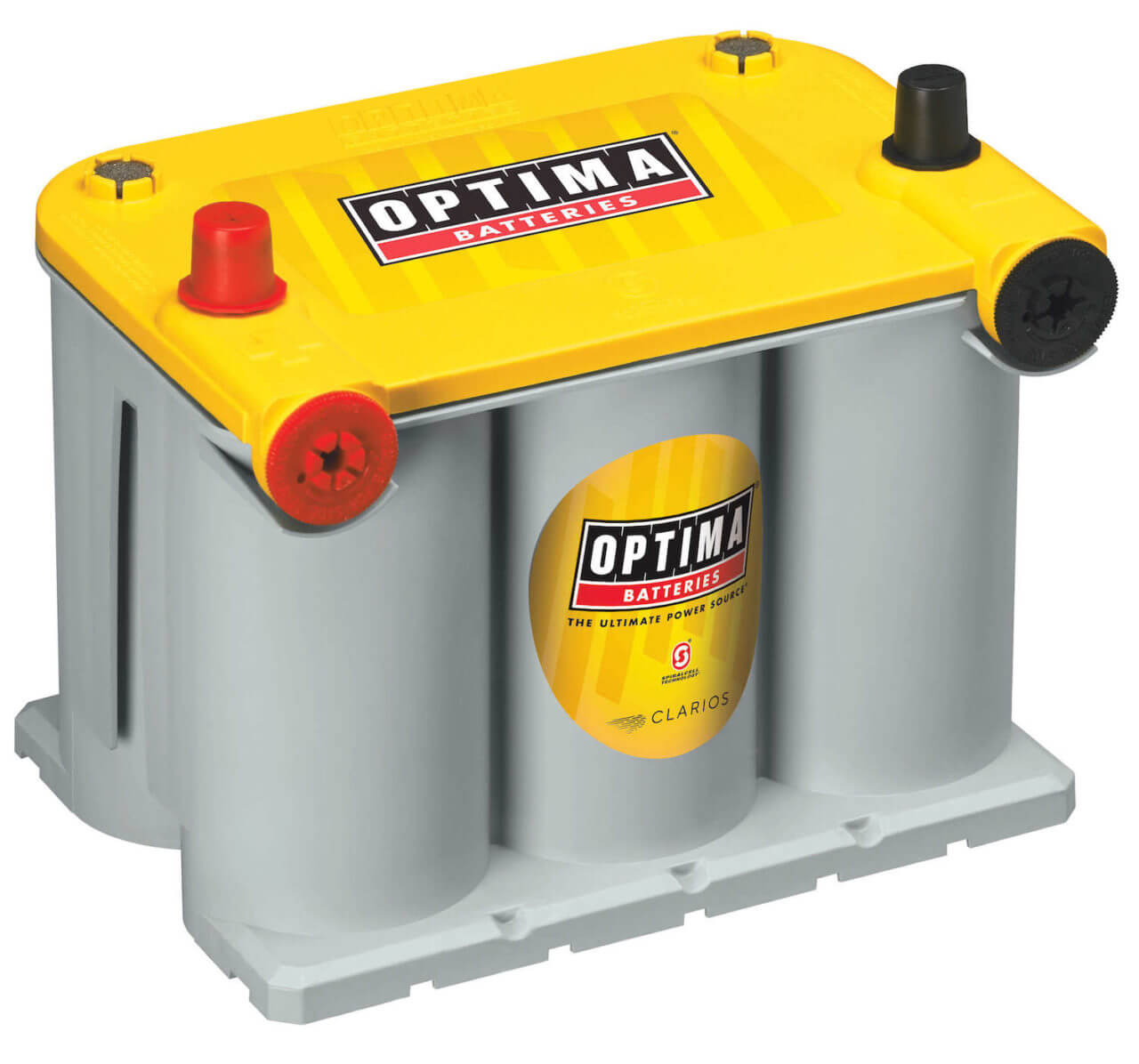
We regularly see new battery failure blamed on the battery manufacturer rather than the actual issue, which is typically a charging or wiring problem. If your battery goes dead, make sure you check the charging and electrical system before installing a new battery.
AGM Batteries
What’s the first thing you do when you know the battery in your 4×4 has gone dead? Well, many of us go through the process of charging and testing the battery. Quite often it results in the need to purchase a replacement. Upgrading to a high-quality AGM type battery is common for off-road enthusiasts. AGM batteries are more durable than flooded batteries and they won’t leak acid into your engine compartment regardless of their orientation or how rough your drive. Unfortunately, many AGM batteries have gotten a bad rap because users incorrectly blame the battery for a premature death. More often than not it’s the vehicle charging system and poorly performed wiring modifications that are the cause of a dead battery. Always be sure to test the charging system and check for parasitic battery draw before replacing a dead battery, especially if you have recently performed any modifications to the electrical system. If the system isn’t charging, is overcharging or there is a short somewhere, it won’t matter what battery you install, it will still end up dead.
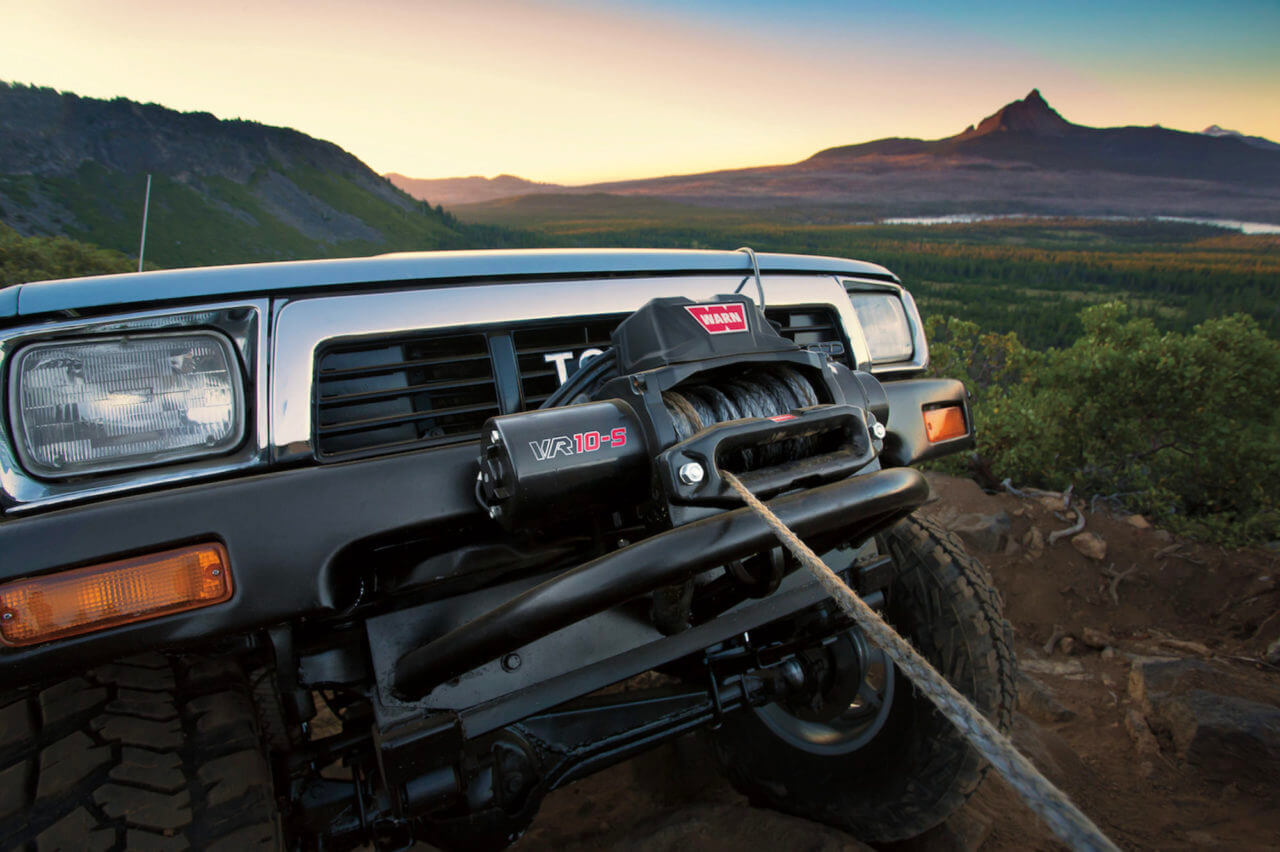
Safety and convenience have made synthetic winch ropes more popular than ever. They certainly have their advantages, but they generally don’t do well when handled improperly. Sharp rocks, mud, sand and UV light can deteriorate a syntactic winch rope and weaken it.
Winch Rope
Synthetic winch rope has become increasingly popular, most often for safety and convenience. Although, many people incorrectly jump to the conclusion that a winch rope is best for their application. In sharp rocky terrain, a wire winch cable will generally outlive a carelessly handled synthetic rope. Sandy and muddy environments can also significantly decrease the life of your synthetic winch line. Synthetic winch ropes require more attention than their steel counterparts. You should regularly unspool and wash dirty winch rope. Dirt and sand embedded in the synthetic rope weaves causes the rope to break down and weaken over time. You should also keep synthetic winch ropes out of the sun. UV light causes deterioration. Wire winch cable isn’t affected by dirt, sand, mud or sunlight. Wire cable isn’t perfect though. It should be properly spooled under load after each use to prevent kinks and frays.
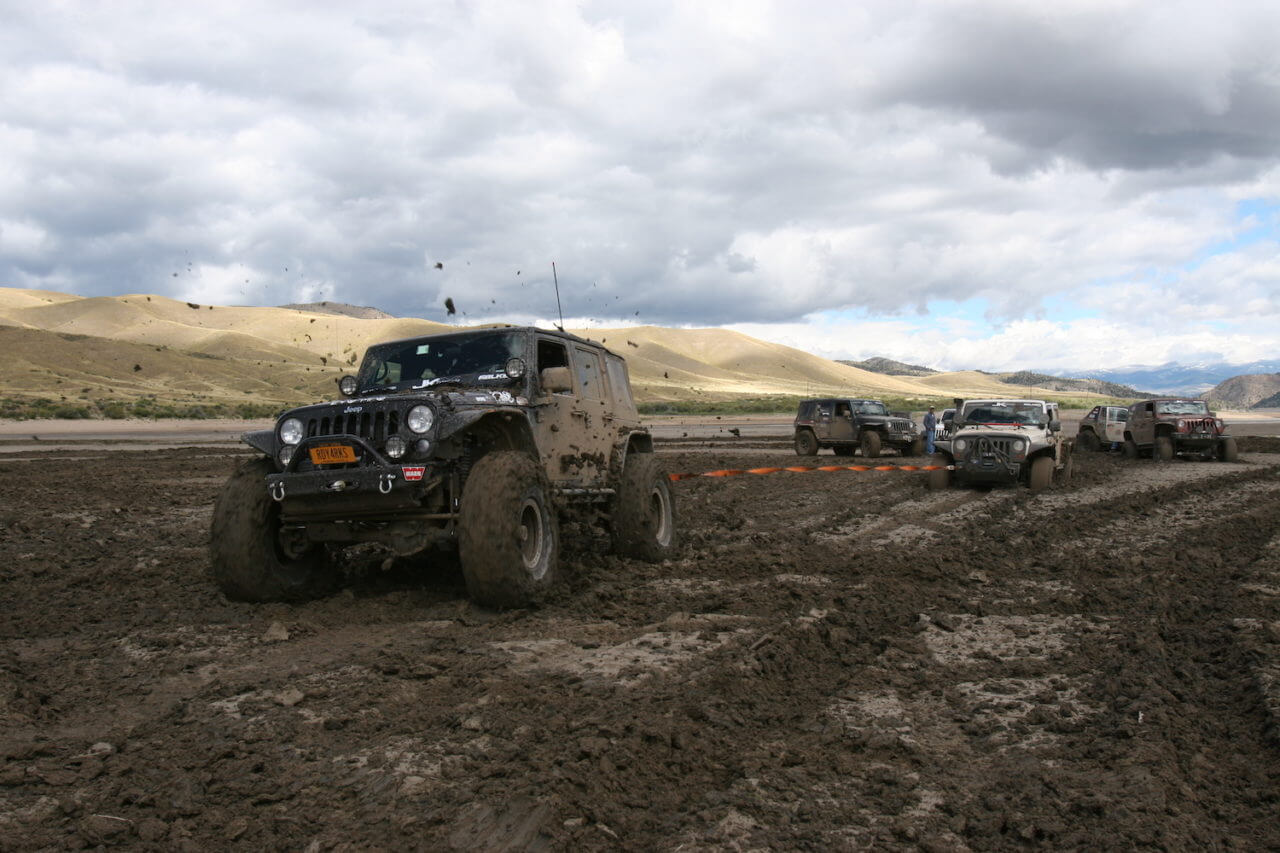
Heavy throttle recoveries are best performed with a kinetic recovery rope. The ability for it to stretch like a rubber band reduces the shock load on drivetrain parts and recovery points. Traditional nylon recovery straps are best for more precise pulling tight technical trails.
Recovery Straps
Even the most seasoned 4×4 enthusiasts regularly misuse recovery straps. Nylon tow straps are for pulling and elastic kinetic recovery ropes are used to sling shot a stuck vehicle. Traditional tow straps don’t stretch and they can be abusive to both vehicles if used improperly. Using a traditional nylon strap for throttle yanking a vehicle can result in broken drivetrain bits and busted recovery points. In most cases, a kinetic recovery rope is best for snow, sand and muddy environments where you will likely sling shot a stuck vehicle. Traditional nylon recovery straps are best for more precise low-speed pulling, such as in the rocks or on tight technical trails.
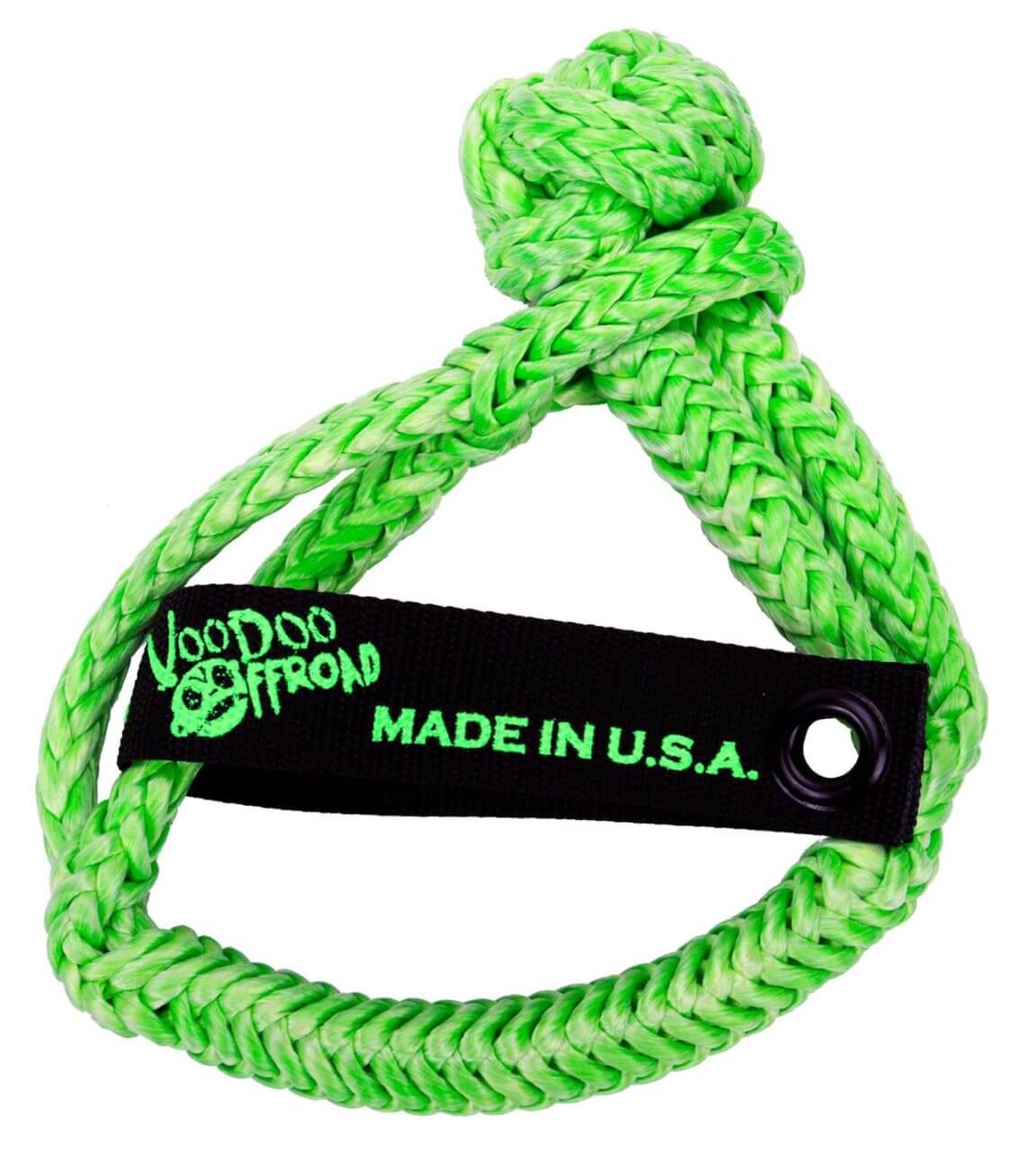
Many 4x4s have nearly worthless factory recovery hooks. The small loops rarely offer enough real estate for a recovery strap to pass through. Soft shackles are the best way to connect a strap to these smallish OE hooks. Never attach a recovery strap to an A-arm, anti-sway bar, shock, axle or other chassis component.
Recovery Points
Most 4x4s have two recovery points at the front, and at least a receiver hitch that can be used as a recovery point in the rear. Unfortunately, many of these recovery points are completely unusable in stock form. Some factory recovery points are a closed loop design and others are simply too small to fit a recovery strap through. Tow straps are often inappropriately attached to other components such as A-arms, antisway bars, axles and so on, which can lead to the damage of these chassis parts. This is where aftermarket parts should come in. A soft shackle is compact enough that it can snake around even the smallest OE recovery points and safely attach a tow rope to your 4×4 without damaging the vehicle bumper or valence. Many different receiver hitch recovery points are available for proper tow strap attachment in the rear. Upgrading to aftermarket bumpers is a good way to add solid accessible recovery points and most aftermarket bumpers come with clevis mounting loops that are substantially better than the factory recovery points found on many 4x4s.



2